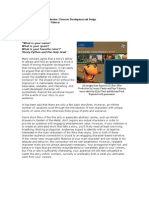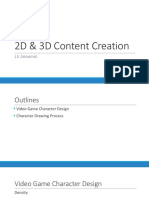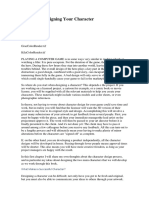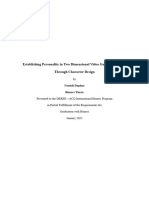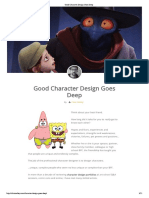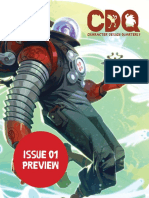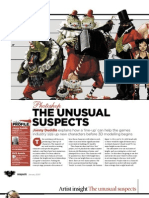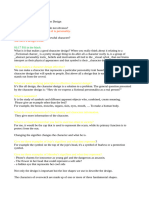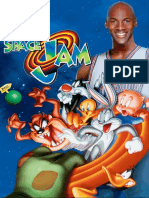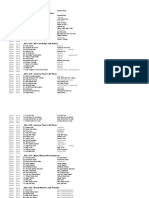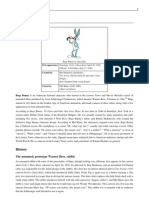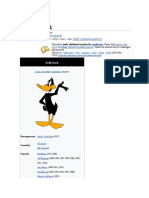0% found this document useful (0 votes)
335 views6 pagesScript 1
This document provides a history of character design in animation from 1892 to the present. It discusses how technology has improved character design over time, from the introduction of color and 3D animation to more recent advances like the internet. The document also outlines some key techniques for good character design, including using silhouette, color palette, and exaggerated personality traits to effectively convey a character. It provides examples from animated shows and movies to illustrate these techniques. In the latter half, it discusses how the document's author created an original character by combining random prompts and applying design principles discussed earlier.
Uploaded by
api-632047644Copyright
© © All Rights Reserved
We take content rights seriously. If you suspect this is your content, claim it here.
Available Formats
Download as DOCX, PDF, TXT or read online on Scribd
0% found this document useful (0 votes)
335 views6 pagesScript 1
This document provides a history of character design in animation from 1892 to the present. It discusses how technology has improved character design over time, from the introduction of color and 3D animation to more recent advances like the internet. The document also outlines some key techniques for good character design, including using silhouette, color palette, and exaggerated personality traits to effectively convey a character. It provides examples from animated shows and movies to illustrate these techniques. In the latter half, it discusses how the document's author created an original character by combining random prompts and applying design principles discussed earlier.
Uploaded by
api-632047644Copyright
© © All Rights Reserved
We take content rights seriously. If you suspect this is your content, claim it here.
Available Formats
Download as DOCX, PDF, TXT or read online on Scribd
/ 6




